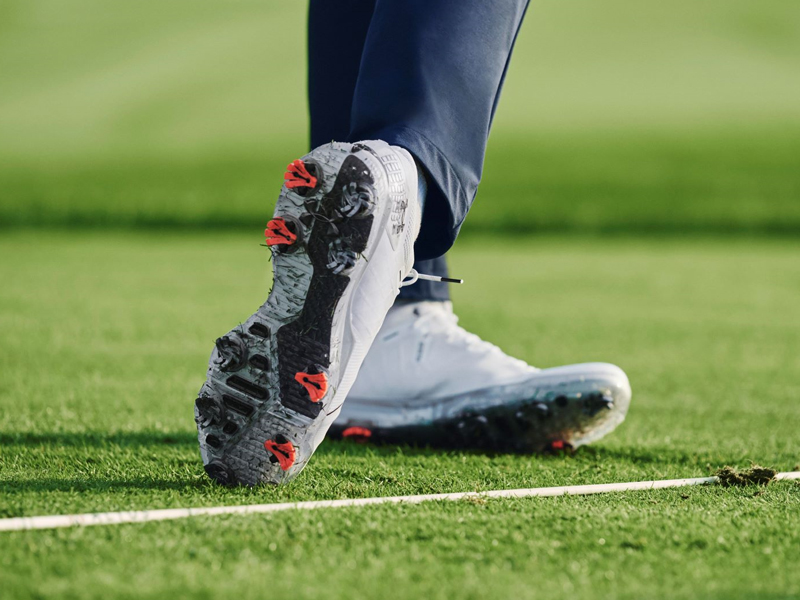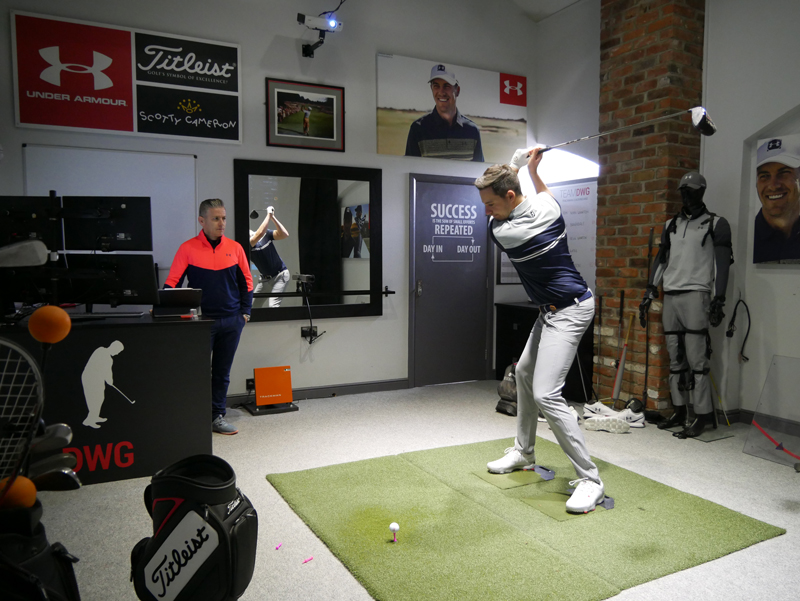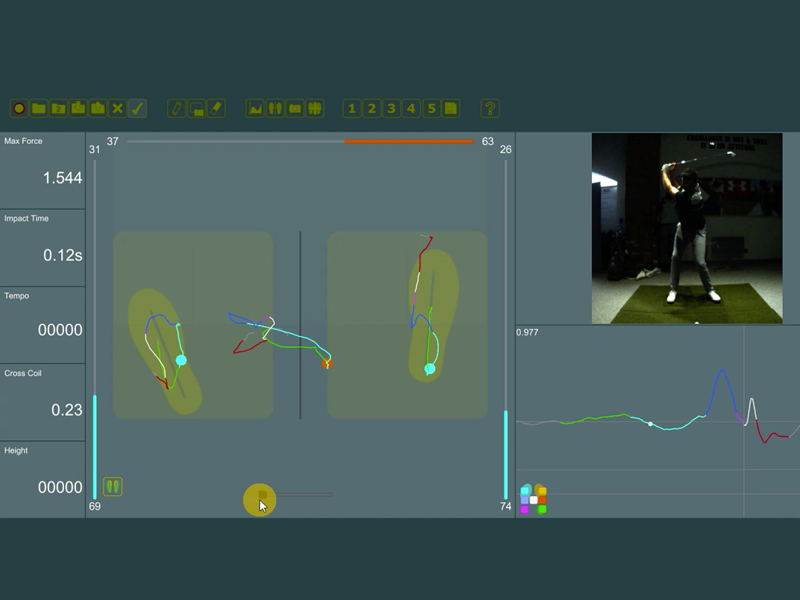How Your Golf Shoes Can Increase Distance
We investigate whether there are distance gains to be had from a more stable golf shoe


Can a golf shoe really increase your chances of hitting the golf ball further? We sent Joel Tadman to find out...
Manufacturers will nearly always talk about how their new golf shoe offers 'improved stability'. But what exactly is stability in golf footwear, how can it be measured and what are the benefits to the golfer?
Ahead of the launch of Spieth 4 GTX, we were invited by Under Armour to test the shoes at elite coach Dan Whittaker’s state-of-the-art facility just outside Knutsford.

As well as using Trackman, we also had access to special force plates and were able and encouraged to test the Spieth 4 GTX against as many competitors as we liked. We obliged, taking the latest models from all the leading shoe brands, including FootJoy, Adidas, Skechers, Ecco and Puma.
In a nutshell, stability refers to the movement of the foot during the swing. If the foot is moving less, ie more stable, through impact, the golfer should be able to deliver the club back to the ball faster and on a more consistent basis.
Specifically, we were looking at vertical ground force, the force you put into the floor, measured as a percentage of your body weight.

The more you limit lateral movement of the foot, the more you push down into the floor which means you get more energy return from the floor pushing back up. This is why we see golfers like Justin Thomas with their feet off the ground at impact, because he puts so much force into the ground relative to his body weight during his swing. Energy is then transferred up from the floor through the body and into the clubhead, almost like a slingshot effect.
Subscribe to the Golf Monthly newsletter to stay up to date with all the latest tour news, equipment news, reviews, head-to-heads and buyer’s guides from our team of experienced experts.
It’s difficult to associate how much added performance comes from the stability of a shoe alongside other factors like the fit and the number/positioning of the sole’s traction elements, but the overriding thing to look at is distance.
We tested numerous models of golf shoe, soft and rigid, spiked and spikeless, with a 7-iron. Generally speaking, the more stable the shoe was (the less the foot was able to move), the more force and clubhead speed we created and the better control we had of strike and direction, leading to longer carries on average.
Our testing showed that the Spieth 4 GTX is one of, if not the most, stable shoe on the market alongside the FootJoy Tour X – there was little between them in terms of performance - both achieving the same average 7-iron clubhead speed and average distance.
The Adidas Tour360 XT and both the spikeless FootJoy Pro/SL and Pro/SL Carbon also performed well, comparable with these shoes in terms of clubhead speed generated and distance achieved, although admittedly not at the level of the Spieth 4 GTX or Tour X. Underneath these shoes were the Skechers Go Golf Pro 4 and Ecco Biom Cool Pro.
While flexible, soft-feeling shoes may ‘feel’ more comfortable to walk in, we saw noticeable drop offs in clubhead speed and control of direction. In fact, it was surprising to see how much dispersion was effected in shoes like the Adidas Codechaos and the Puma Ignite Pwradapt.
While these types of shoes unquestionably have their place, especially for those who want a softer, more lightweight feel, for the majority of golfers a more stable shoe with a firmer outsole will deliver the most optimum combination of clubhead speed, distance and accuracy.
We saw variances in carry distance of 7.5 yards on average, 2mph in clubhead speed and 13 yards in dispersion from best to worst. This would almost certainly be amplified were we to test with driver.
We also found that more unstable shoes can also exaggerate swing faults. Using me as an example, my lead knee collapses in the backswing and them my left ankle folds as a result. A shoe with a more rigid base would help prevent that while a more flexible shoe makes it worse. It does also work the other way but more often that not, a more stable shoe will promote a more powerful, controlled swing.
So what should golfers look for in a shoe? Whittaker explains.
“You’ve got to have a foot plate that doesn’t twist. The more rigid a sole is, the more power you can put through the ground. A wider base is absolutely key and you’ve got to have a really snug fit inside the upper with no movement of the foot at all inside the shoe. Make sure the laces are pulled tight all the way down and done up properly.”
In summary, it’s time golfers really started to consider footwear as an important piece of kit that can have tangible performance benefits, rather than simply things that cover their feet when they play golf.

Joel has worked in the golf industry for over 15 years covering both instruction and more recently equipment. He now oversees all equipment and video content at Golf Monthly, managing a team of talented and passionate writers and presenters in delivering the most thorough and accurate reviews, buying advice, comparisons and deals to help the reader or viewer find exactly what they are looking for.
One of his career highlights came when covering the 2012 Masters he got to play the sacred Augusta National course on the Monday after the tournament concluded, shooting a respectable 86 with just one par and four birdies. To date, his best ever round of golf is a 5-under 67 back in 2011. He currently plays his golf at Burghley Park Golf Club in Stamford, Lincs, with a handicap index of 3.1.
Joel's current What's In The Bag?
Driver: Titleist GT3, 9°, Fujikura Ventus Black 6 S shaft.
Fairway wood: Titleist TSR3, 15°
Hybrid: Titleist TSi2, 18°
Irons: Titleist T150, 4-PW
Wedges: Titleist Vokey SM10, 50°, 54° and 58°
Putter: LAB Golf DF3
Ball: 2025 Titleist Pro V1x